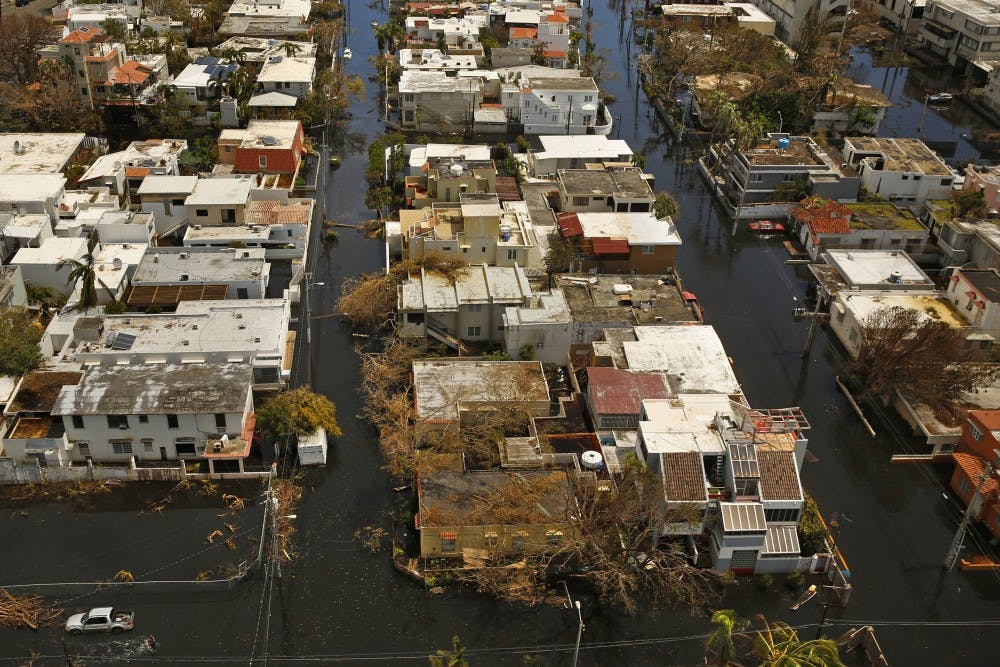Almost nine months after Hurricane Maria struck Puerto Rico on Sept. 20, 2017, some of the island’s residents still have not had their electricity restored.
The response to Hurricane Maria by the Federal Emergency Management Agency (FEMA) and the Army Corps of Engineers has been slow and insufficient.
It’s important to note Hurricane Maria struck within a month of two other major hurricanes in the U.S.: Hurricane Harvey in Texas and Hurricane Irma in Florida. This created a massive challenge for FEMA, perhaps the most demanding period in its history.
That being said, it is still obvious from data on the aftermath of these three disasters that Puerto Rico's recovery effort was massively underserved in comparison to the efforts in Texas and Florida.
A robust investigation by Politico uncovered massive discrepancies in the amount of assistance Puerto Rico received and the amount received on the U.S. mainland.
Compare the number of federal personnel who were present in Texas and Puerto Rico nine days after the landfalls of their respective hurricanes. In Texas, there were about 30,000. In Puerto Rico, there were only about 10,000.
After those nine-day periods, FEMA had approved $141.8 million in individual assistance to victims of Harvey, but only $6.2 million to victims of Maria.
This is in spite of the fact that Maria caused more damage than Harvey.
A PBS Frontline report showed other contrasts between the nine-day periods following the landfalls of Maria, Harvey and Irma.
In those time periods, the federal government distributed twice as much water and over four times as many meals to victims of Irma and Harvey – averaging the two – than to victims of Maria.
In the first 30 days after Irma, the Army Corps of Engineers put up 4,500 roofs. In the same timespan after Maria, the Corps put up only 439 roofs.
These statistics are just the tip of the iceberg. In virtually every aspect of disaster response, Puerto Rico was underserved.
This neglect starts at the top. President Trump tweeted about Harvey three times as much as he did about Maria. When he did tweet about Maria, he implied Puerto Ricans are lazy by saying they “want everything to be done for them when it should be a community effort.” He visited Houston twice within eight days after Harvey’s landfall, but took 13 days to visit Puerto Rico.
Of course, Trump’s physical presence wouldn’t necessarily have helped the recovery effort – once he did arrive, he stirred outrage by tossing paper towels to a crowd – however, these discrepancies show he is not valuing the Puerto Rican victims equally, and that sends a message.
There is also the issue of the Puerto Rican government’s undercount of Maria’s victims. The official death toll — 64 — is considerably lower than credible independent estimates.
CNN surveyed funeral homes and estimated 499 storm-related deaths. The New York Times and Puerto Rico’s Center for Investigative Journalism calculated tolls slightly above 1,000 based on excess deaths during the period during and just after when the storm occurred.
In a new study by Harvard, researchers in the New England Journal of Medicine surveyed households about storm-related deaths. The study estimates 793 to 8,498 people died from Maria. If, for example, the midpoint of that range — 4,645 — were valid, it would make Hurricane Maria deadlier than the 9/11 attacks.
On Monday June 4, a judge in Puerto Rico ruled in favor of CNN and Puerto Rico’s Center for Investigative Journalism, ordering the Puerto Rican government to release death certificates and related data from the period in question. Hopefully this will help create a more precise understanding of Maria’s effects.
The reason Puerto Ricans have been so underserved is obvious – Puerto Rico has a colonial status in the U.S. governing system.
Puerto Rico has just one delegate in the U.S. Congress — a delegate that cannot even vote. Puerto Ricans, despite being U.S. citizens and taxpayers, cannot even vote for their own president.
As long as Puerto Rico remains a mere colony of the U.S., it will never receive the same treatment that the states do.
The near-term solution is to double down on federal relief efforts in Puerto Rico. The long-term solution is for Puerto Ricans to have a chance to choose democratically whether they want to be a state with full rights or an independent country.






